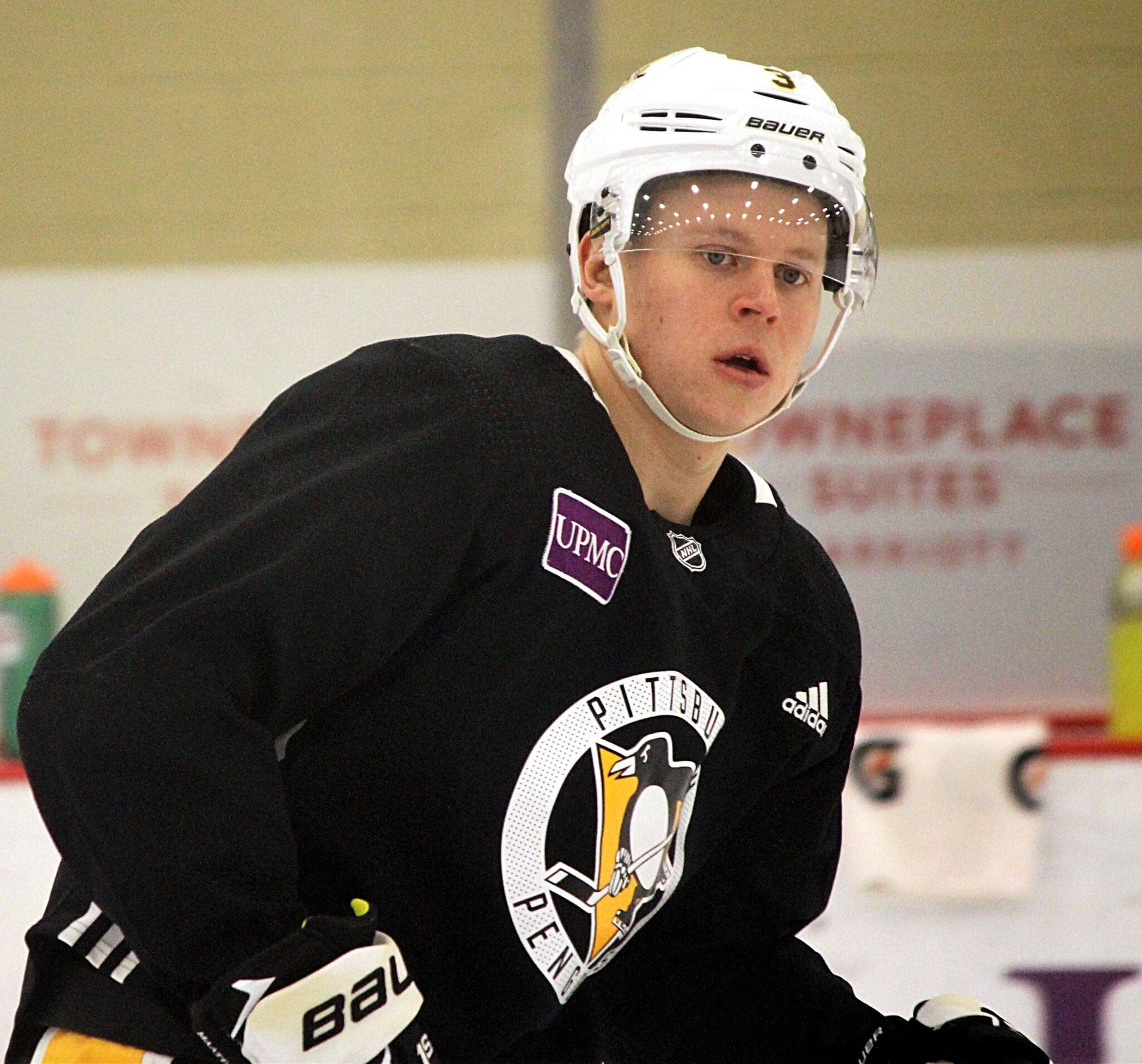Penguins
Olli Määttä’s Encouraging Development Opens Up Possibilities
He’s but 23 years old, but he’s already seen both sides of the hype cycle in professional sports.

Olli Määttä is but 23 years old, but he’s already seen both sides of the hype cycle in professional sports.
What goes up will probably go down, and maybe even back up again.
Määttä appeared to be a star in the making after the 2013-14 season, in which the native Finn posted nine goals and 29 points. He finished fifth in rookie of the year voting and there was reason to believe he’d be a fixture on the Penguins’ blue line for a decade or more.
Then came the health problems, headlined by the bout with thyroid cancer early in this second season. That was followed in the span of a year by two shoulder surgeries and a violent fall into the boards caused by a questionable Nino Niederreiter check. He bounced back late in the 2015-16 season, eventually averaging over 20 minutes a night during that year’s run to the Stanley Cup.
But after an injury-shortened 2016-17 that saw Määttä submit his worst offensive output (seven points in 55 games) and his worst relative shot-share numbers (minus-2.5 percent compared to team) of his NHL career. That contract that pays him $4.083 million annually through 2021-22 was looking rather onerous at this time last summer.
Then, Jim Rutherford signed Justin Schultz to a three-year contract ($5.5 million salary) and Brian Dumoulin to a six-year deal ($4.1 million salary). Määttä was officially the Penguins’ fourth-highest-paid defensemen heading into last season, and it could’ve been argued that status was generous.
Timely Transformation
Now, we can sit here following Määttä’s resurgent 2017-18 and wonder if he and the 26-year-old Dumoulin are the new leaders of the Pittsburgh defense corps.
Kris Letang‘s season-long performance in his return from neck surgery didn’t inspire a ton of confidence, and Schultz suffered a year-to-year dip in points per game (from 0.65 in 2016-17 to 0.43) and relative shot share (from plus-1.9 percent to minus-2.1). Those guys aren’t without value, but it’s not a stretch to call Dumoulin and Määttä the team’s two most reliable defenders heading into 2018-19.
If that’s the case, then the Penguins are in good shape in regards to the salary cap. Both men could be expected to maintain their level for the next couple of years, and they cost just over $8 million annually. With the cap rising in the neighborhood of $80 million for next season, that’s not much to pay two top-four defenders.
And as I wrote with regards to Dumoulin last month, Määttä added some offensive thrust to his usual game in 2017-18. While playing all 82 games for the first time in his five-year career, Määttä was notably more aggressive in firing the puck. He averaged 3.9 shot attempts per game, a significant increase over his previous career high of 3.1 in his rookie season and an even bigger leap from the 2.6 he averaged during the three seasons in between.
Määttä kept up the pace in the playoffs, shooting 3.5 times per game, but that wasn’t the only encouraging development from the Penguins’ No. 3. Per game-tracking data complied by Corey Sznajder, Määttä had the Penguins’ second-best exit rate on defensive zone breakouts, behind only Dumoulin.
Best of Both Worlds?
In other words, Määttä was both reliable in his own end and played a more integral role in the attacking zone, all of which opens up more options for Rutherford in his attempt to keep the Penguins a viable Cup contender.
For one, the Penguins could simply roll over the defense corps into next season and plan on giving Määttä more of a workload. An extra minute or two per night could both increase his positive influence on the team while simultaneously taking a little bit of strain off Letang in his early 30s. Määttä can’t skate like Letang — not even close, really — but he can surely shoulder a little more ice time.
Furthermore, if the Penguins want to give Matt Hunwick another shot in the fall, Määttä was one of the few players with which Hunwick posted a positive shot share in 2017-18. Hunwick got a full 3 percent boost with Määttä compared to without It’s questionable that Hunwick can handle top-four minutes at this stage of his career, but that pairing is an option.
Finally, Määttä’s growth could create more trade-related possibilities during a summer that will likely see Rutherford make at least one deal. Are the Penguins’ more likely to dangle Letang out there now? Could Määttä himself be available in order to help the team replenish its depth?
Don’t rule anything out, even though it strikes this commentator that Määttä is the type of player one hangs onto. Much like with Dumoulin, the Penguins’ faith in Määttä, manifest in that six-year contract signed in Feb. 2016, is looking more appropriate by the day.
That’s a positive, regardless of what happens from this point forward.












